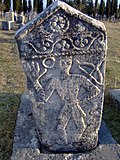This is a list of settlements in Illyria founded by Illyrians (southern Illyrians, Dardanians, Pannonians), Liburni, Ancient Greeks and the Roman Empire. A number of cities in Illyria and later Illyricum were built on the sites or close to the sites of pre-existing Illyrian settlements, though that was not always the case. Some settlements may have a double entry, for example the Ancient Greek Pola, Roman Pietas Julia, and some toponyms are reconstructed.
Contents
- Albania
- Identified sites
- Unidentified sites
- Bosnia and Herzegovina
- Identified sites 2
- Unidentified sites 2
- Croatia
- Identified sites 3
- Unidentified sites 3
- Kosovo
- Identified sites 4
- Unidentified sites 4
- Montenegro
- Identified sites 5
- Unidentified sites 5
- North Macedonia
- Identified sites 6
- Unidentified sites 6
- Serbia
- Identified sites 7
- Unidentified sites 7
- Illyrian settlements
- Liburnian cities
- Venetic cities
- Roman cities
- Mislocated
- See also
- Notes
- References
- Bibliography
- External links






